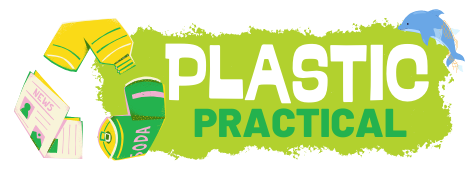I treat small plastic keychains like tiny, wearable stories—so I start by matching shape, size, and finish to how you live with your keys. I pick lightweight, durable plastics in saturated hues, choose matte for daily wear or glossy for display, and simplify images into bold silhouettes for crisp engraving or UV prints. I pair the piece with the right ring or clasp and simple packaging that adds meaning. Stick around and I’ll show how each choice makes a keychain feel intentional.
Key Takeaways
- Choose a shape and size that match the recipient’s daily habits and how they’ll carry or display the keychain.
- Select lightweight, durable plastic with a finish (matte or glossy) based on scratch visibility and tactile preference.
- Use saturated colors and compatible marking methods—laser engraving for contrast, UV printing for detailed imagery.
- Keep personalized text short: initials, a date, or a concise phrase; simplify complex images to bold silhouettes.
- Pair the plastic piece with appropriate hardware (split ring or lobster clasp) and simple packaging to enhance meaning.
When I personalize a keychain, I start by picturing how it will look and feel — the size in my hand, the colors catching light, and the engraving or charm that tells a story. I imagine the person who’ll carry it: their habits, the bag or pocket it will ride in, the moments they’ll glance down and smile. That mental image narrows choices quickly—shape, thickness, finish—and helps me avoid options that look good online but feel wrong in real life.
I design keychains by imagining how they’ll feel and fit into someone’s daily moments, narrowing choices to what truly matters.
I choose plastics for versatility: they’re lightweight, durable, and come in finishes from matte to glossy. I feel the texture options between fingers, thinking about grip and scratch resistance. If the keychain lives in a crowded bag, I favor thicker plastic that won’t bend or crack and a matte finish to hide scuffs. If it’s decorative and displayed on a hook, thinner, glossy pieces with vivid color work better.
Color matters more than you’d think; saturated hues resist fading and read clearly against metal rings or leather fobs.
Engraving or printing must match the material. Some plastics accept laser engraving that carves crisp contrast; others take UV printing that reproduces photos and gradients. I pick the method that preserves legibility and detail at small scale. For text, I use short phrases, initials, or a meaningful date—large enough to read without squinting. For images, I simplify complex scenes into bold silhouettes or high-contrast photos; tiny details disappear on a two-inch surface.
Attachment hardware ties the design together. A sturdy split ring works for daily keys; a lobster clasp adds quick-release convenience. I test the connection in my palm, imagining tugging motions and the jostle of keys. If the keychain will clip to a backpack, I choose corrosion-resistant metal to handle weather and salt air. For children, I pick safety-checked clasps with smooth edges.
I consider personalization as a layering process: base shape, color, surface finish, method of marking, and hardware. Each decision answers a practical question—will it be handled often? Does it need to be visible? Is it a keepsake or a workhorse? This framework cuts through trends and focuses on function plus emotion.
Packaging and presentation influence perception, so I think about a simple pouch or a minimal card that explains the personalization. A little context can turn a small plastic tag into a meaningful token.
In the end, a well-personalized keychain fits into daily life without fuss and sparks recognition each time it’s picked up. That’s what I aim for: thoughtful details that make a small object feel intentional and personal.
Frequently Asked Questions
How Durable Are Personalized Plastic Keychains Under Daily Wear?
They’re fairly durable for daily use: I expect scratches and color fade over months, hardware may tarnish sooner, but with sturdy plastic and reinforced rings they’ll survive keys, pockets, and drops—just avoid harsh solvents or sharp edges.
Can Personalized Keychains Be Recycled?
Yes — some personalized keychains can be recycled, but it depends on the plastic type and local facilities. I’ll picture your bright keychain at the curb, then help you check materials and nearby recycling rules to avoid landfill waste.
Do Plastics Used Contain Any Allergens or Toxic Substances?
They generally don’t contain common food allergens, but some plastics can leach harmful additives like phthalates, BPA, or heavy metals from dyes. I recommend checking material specs and certifications or asking the maker for safety test results.
How Long Does Personalization Ink or Engraving Typically Last?
It usually lasts years; I’ve seen ink fade in sunlight within months, but UV-resistant printing or deep laser engraving can endure a decade or more. Choose engraving for permanence; I’d avoid cheap surface inks.
Are There Options for Water-Resistant or Uv-Protected Finishes?
Yes — I offer water-resistant clear coats and UV-stable inks, plus hard acrylic or epoxy topcoats for heavy wear; I’ll recommend the best combo for your keychain’s material and how you plan to use it.

